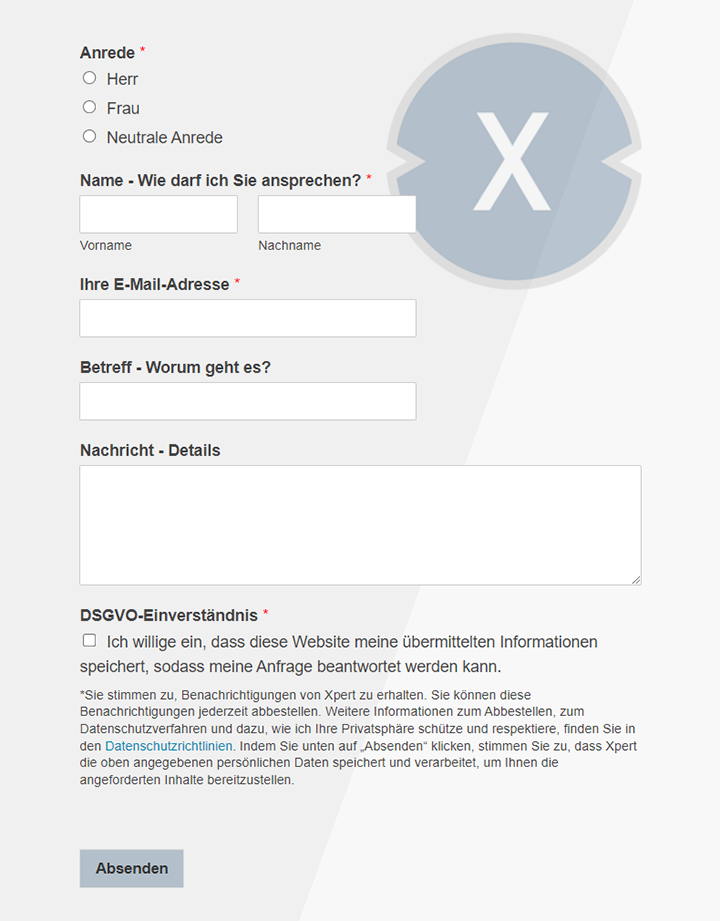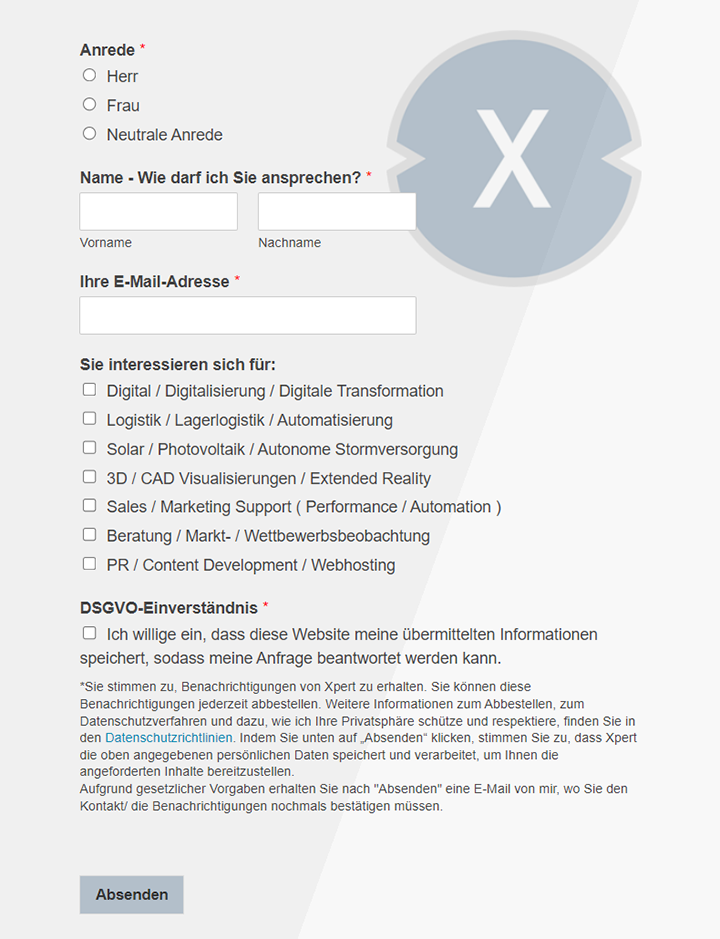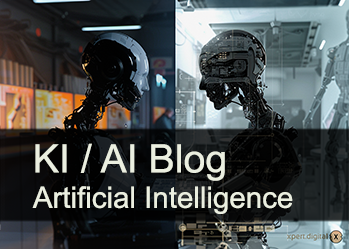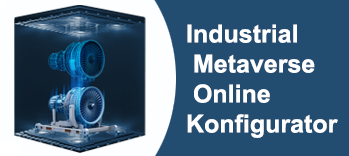Germany's data treasure: How historical production data secures the AI lead in mechanical engineering
Language selection 📢
Published on: September 4, 2025 / Updated on: September 11, 2025 – Author: Konrad Wolfenstein

Germany's data treasure: How historical production data secures the AI advantage in mechanical engineering – Image: Xpert.Digital
More than just zeros and ones: The untapped data treasure that can save mechanical engineering
China's nightmare? Germany's secret AI weapon lies in old archives
German mechanical engineering, a global synonym for precision and quality, is at a crucial turning point. In an era where artificial intelligence is rewriting the rules of industrial production, traditional engineering alone is no longer sufficient to defend global leadership. However, the future of market leadership will not be determined by the constant generation of new data, but rather by the intelligent use of an often overlooked but invaluable asset already slumbering in companies' digital archives.
This capital is the treasure trove of historical production data accumulated over decades – the digital gold of the 21st century. Every sensor reading, every production cycle, and every maintenance report from the past few years reflects the unique DNA of German manufacturing processes. It is precisely these vast, high-quality data sets that form the foundation for the decisive competitive advantage in the age of AI. They enable machines to learn, optimize processes autonomously, and achieve levels of quality and efficiency that previously seemed unattainable.
Surprisingly, however, this treasure remains largely untapped. Although most companies recognize the importance of AI, many, especially SMEs, are hesitant about widespread implementation. They are stuck in the "pilot trap," trapped in a vicious cycle of isolated projects, a lack of trust, and uncertainty about how to generate measurable profit from the mountains of data. This hesitation is not a technological hurdle, but a strategic one—a "trust gap" that blocks the path to the future.
This article demonstrates why this reluctance poses a direct threat to competitiveness and how companies can close this gap. We explore how the existing treasure trove of data can be systematically leveraged using modern methods such as synthetic data and transfer learning, how managed AI platforms make implementation accessible and cost-effective even for medium-sized businesses, and what concrete, measurable ROI companies can expect in areas such as predictive maintenance and intelligent quality control. It's time to shift our focus away from the perceived lack of data and tap into the existing wealth.
The strategic imperative: From data treasure to competitive advantage
The integration of artificial intelligence (AI) is far more than a technological upgrade for German mechanical and plant engineering; it is the decisive lever for maintaining global leadership in a new industrial era. The industry is at a turning point where future competitiveness will be determined not by the generation of new data, but by the intelligent utilization of a treasure trove of data accumulated over decades. Those who hesitate to tap into this treasure now risk missing out on a future characterized by data-driven autonomy, efficiency, and unprecedented quality.
Germany's unique starting position: A treasure trove of data meets engineering skills
The German mechanical and plant engineering industry is exceptionally strong and uniquely positioned to lead the AI-based industrial revolution. The foundations have already been laid, forming a foundation that international competitors cannot easily replicate. A world-leading robot density of 309 industrial robots per 10,000 employees demonstrates an extremely high level of automation. Only South Korea and Singapore have a higher density. Even more crucial, however, is the digital wealth created by the consistent implementation of Industry 4.0. German companies can draw on a reservoir of digital machine data that is unique in the world and has grown over years and decades. This historical production data is the gold of the 21st century—a detailed digital map of processes, materials, and machine behavior that is unparalleled in its depth and quality. Coupled with internationally recognized German engineering excellence, this creates enormous potential to redefine the production of the future and develop Germany into a global center for industrial AI software.
But the reality reveals a remarkable discrepancy. Although two-thirds of German companies view AI as the most important future technology, studies show that only between 8% and 13% actively use AI applications in their processes. This hesitancy, especially among SMEs, is not due to a lack of assets, but rather to the challenge of recognizing and activating the value of the existing treasure trove of data.
The activation challenge: From data collection to value creation
The reasons for this reluctance are complex, but at their core, they crystallize not as data scarcity, but as strategic hurdles: a lack of internal expertise in data analysis, a lack of confidence in the new technology, and an inadequate strategy for leveraging existing data. Many companies are caught in the so-called "pilot trap": They initiate isolated pilot projects but shy away from a broad implementation that systematically leverages the treasure trove of data. This hesitancy is often rooted in a fundamental uncertainty about how to generate a clear return on investment (ROI) from the vast, often unstructured volumes of data. This is less a technological deficit than a "strategic trust gap." Without a coherent data exploitation strategy and a clear implementation path, investments remain low and projects isolated. The lack of transformative success of these small-scale experiments, in turn, reinforces the original skepticism, leading to a vicious cycle of stagnation.
Competitiveness in Industry 4.0: Those who do not act now will lose
In this environment, the global competitive landscape is changing rapidly. Traditional German strengths such as the highest product quality and precision are no longer sufficient as sole differentiators. International competitors, especially from Asia, are catching up in terms of quality and combining this with greater speed and flexibility in production. The days when a compromise between the highest quality and longer delivery times was acceptable are over. The competition isn't waiting and isn't paying tribute to Germany's engineering heritage. Failure to utilize the existing wealth of data is therefore no longer just a missed opportunity, but a direct threat to long-term market leadership. Stagnant productivity growth and rising costs are putting additional pressure on the industry. The intelligent analysis of historical and current production data using AI is the key to unlocking the next level of productivity, increasing process flexibility, and sustainably securing competitiveness in Germany, a high-wage location.
The gold in the archives: The invaluable value of historical production data
At the heart of any powerful AI is a high-quality and comprehensive dataset. This is precisely where the decisive, often overlooked advantage of German mechanical engineering lies. The operational data collected over decades as part of Industry 4.0 is not a waste product, but a strategic asset of immense value. The ability to leverage and utilize this treasure trove of data will separate the winners from the losers of the next industrial revolution.
The anatomy of an AI model: learning from experience
In contrast to traditional automation, which is based on hard-coded rules, AI systems are not programmed but trained. Machine learning (ML) models learn to recognize complex patterns and relationships directly from historical data. They require a large number of examples to internalize the statistical properties of a process and make reliable predictions.
This exact data is already available in German factories. Every production run, every sensor reading, every maintenance cycle of the past few years has been digitally recorded and archived. This historical data contains the unique "DNA" of every machine and every process. It documents not only normal operation, but also subtle deviations, material fluctuations, and the gradual changes that precede a later failure. For an AI, these historical records are an open book from which it can learn what an optimal process looks like and which patterns indicate future problems.
The challenge of data quality and availability
However, simply possessing data is not enough. Its true value is only realized through its processing and intelligent analysis. The practical hurdles often lie in the structure of the legacy data. It is often stored in different formats and systems (data silos), contains inconsistencies, or is incomplete. The key task is to cleanse and structure this raw data, and make it available in a central platform so that AI algorithms can access and analyze it.
AI methods themselves can help with this process. Algorithms can help find and fix data errors, inconsistencies, and duplicates, estimate missing values, and improve overall data quality. Building a solid data infrastructure, such as a data lake, is therefore the first crucial step in unearthing the gold in the archives.
The “industrial quality paradox” as an opportunity
A common concern is that historical data from highly optimized German production processes represents 99.9% of the normal state and contains hardly any data on errors or machine failures. But this apparent problem is actually a huge opportunity.
An AI model trained on such a vast dataset of "good" conditions learns an extremely precise and detailed definition of normal operation. Even the smallest deviation from this learned normal condition is detected as an anomaly. This approach, known as anomaly detection, is perfectly suited for predictive maintenance and predictive quality assurance. The system doesn't need to have seen thousands of failure examples; it only needs to know perfectly what a fault-free process looks like. Because German mechanical engineers have vast amounts of such "good" data at their disposal, they have the ideal basis for developing highly sensitive monitoring systems that detect problems long before they lead to costly failures or quality degradation.
Decades of perfecting production processes have thus inadvertently created the ideal dataset for the next stage of AI-supported optimization. Past success becomes the fuel for future innovations.
A new dimension of digital transformation with 'Managed AI' (Artificial Intelligence) - Platform & B2B Solution | Xpert Consulting

A new dimension of digital transformation with 'Managed AI' (Artificial Intelligence) – Platform & B2B Solution | Xpert Consulting - Image: Xpert.Digital
Here you will learn how your company can implement customized AI solutions quickly, securely, and without high entry barriers.
A Managed AI Platform is your all-round, worry-free package for artificial intelligence. Instead of dealing with complex technology, expensive infrastructure, and lengthy development processes, you receive a turnkey solution tailored to your needs from a specialized partner – often within a few days.
The key benefits at a glance:
⚡ Fast implementation: From idea to operational application in days, not months. We deliver practical solutions that create immediate value.
🔒 Maximum data security: Your sensitive data remains with you. We guarantee secure and compliant processing without sharing data with third parties.
💸 No financial risk: You only pay for results. High upfront investments in hardware, software, or personnel are completely eliminated.
🎯 Focus on your core business: Concentrate on what you do best. We handle the entire technical implementation, operation, and maintenance of your AI solution.
📈 Future-proof & Scalable: Your AI grows with you. We ensure ongoing optimization and scalability, and flexibly adapt the models to new requirements.
More about it here:
Data augmentation for industry: GANs and synthetic scenarios for scalable, error-resistant models

Data augmentation for industry: GANs and synthetic scenarios for scalable, error-resistant models – Image: Xpert.Digital
From rough diamond to brilliant: data refinement and strategic enrichment
The historical data treasure of German mechanical engineering provides an invaluable foundation. However, to harness the full potential of AI and make models robust for all conceivable scenarios, this real data treasure can be specifically refined and enriched. This is where synthetic data comes into play—not as a replacement for missing data, but as a strategic tool to supplement and cover rare but critical events.
Synthetic data: Targeted training for emergencies
Synthetic data is artificially generated information that mimics the statistical characteristics of real data. It is generated through computer simulations or generative AI models and offers the possibility of creating targeted scenarios that are underrepresented in real historical data.
While real data perfectly replicates normal operation, synthetic data can be used specifically to generate thousands of variations of rare failure patterns without having to produce actual scrap. Machine failures that might only occur every few years in reality can be simulated, thus preparing the AI model for the worst-case scenario. This approach elegantly resolves the "industrial quality paradox": It uses the wealth of real "good" data as a basis and enriches it with synthetic "bad" data to create a comprehensive training set.
The hybrid data strategy: The best of both worlds
The smartest strategy lies in combining both data sources. A hybrid data strategy leverages the strengths of both worlds to develop extremely robust and accurate AI models. Vast amounts of historical, real-world production data form the foundation and ensure that the model understands the specific physical conditions and nuances of the real-world manufacturing environment. Synthetic data serves as a targeted supplement to prepare the model for rare events, so-called "edge cases," and increase its generalization capability.
This hybrid approach is far superior to relying on a single data source. It combines the authenticity and depth of real data with the scalability and flexibility of synthetic data.
Generative models for data augmentation
A particularly powerful method for enrichment is the use of generative AI models such as Generative Adversarial Networks (GANs). These models can learn from the existing set of real-world data and generate new, realistic, yet artificial data points based on it. For example, a GAN can generate 10,000 new, slightly different images of scratches from 100 real-world images of a scratch on a surface. This process, known as data augmentation, multiplies the value of the original dataset and helps make the AI model more robust against small variations without the need to laboriously collect and manually label additional real-world data.
In this way, the historical data treasure is not only utilized, but actively augmented and refined. The combination of a solid foundation of real data and targeted enrichment with synthetic data creates a training foundation that is unsurpassed in quality and depth, paving the way for next-generation AI applications.
Transferring knowledge into practice: The power of transfer learning
The utilization of the treasure trove of data accumulated over decades is significantly accelerated by a powerful machine learning technique: transfer learning. This approach makes it possible to extract the knowledge contained in vast historical data and efficiently transfer it to new, specific tasks. Instead of training an AI model from scratch for each new product or machine, existing knowledge is used as a starting point, drastically reducing development effort and making AI implementation scalable across the entire company.
How Transfer Learning works: Reusing knowledge instead of relearning it
Transfer learning is a technique in which a model trained for a specific task is reused as a starting point for a model for a second, related task. The process typically proceeds in two phases:
Pre-training with historical data
First, a basic AI model is trained on a very large, comprehensive historical dataset. This could, for example, be the entire dataset of all production lines of a particular machine type from the last ten years. During this phase, the model learns the fundamental physical relationships, the general process patterns, and the typical characteristics of the produced parts. It develops a deep, generalized "understanding" of the process that goes beyond a single machine or a single job.
Fine-tuning for specific tasks
This pre-trained base model is then taken and further trained with a much smaller, specific dataset (fine-tuning). This could be the dataset from a new machine that has just been put into operation or the data for a new product variant. Since the model no longer has to start from scratch but already has a solid foundation of knowledge, this second training step is extremely data- and time-efficient. Often, just a few hundred or thousand new data points are enough to specialize the model for the new task and achieve high performance.
The strategic advantage for mechanical engineering
The business benefits of this approach are enormous for mechanical and plant engineering. It transforms historical data into a reusable, strategic asset.
Faster implementation
Development time for new AI applications is reduced from months to weeks or even days. A model for quality control of a new product can be quickly deployed by fine-tuning an existing base model.
Reduced data requirements for new projects
The hurdle for using AI in new products or new factories is drastically reduced, as there's no need to collect massive amounts of data again. A small, manageable amount of specific data is sufficient for adaptation.
Greater robustness
Models pre-trained on broad historical data are inherently more robust and generalize better than models trained only on a small, specific dataset.
Scalability
Companies can develop a central base model for one machine type and then quickly and cost-effectively adapt and roll it out to dozens or hundreds of individual machines at their customers.
This strategy makes it possible to fully exploit the value of data collected over the years. Each new AI application benefits from the knowledge of all previous ones, leading to a cumulative knowledge buildup within the company. Instead of running isolated AI projects, a networked, learning system is created that becomes more intelligent with each new application.
Concrete applications and value creation in mechanical engineering
The strategic use of historical production data, enhanced through targeted enrichment and efficiently deployed through transfer learning, creates concrete and highly profitable application opportunities. These go far beyond incremental improvements and enable a fundamental transformation toward flexible, adaptive, and autonomous production.
Intelligent quality control and visual inspection
Traditional, rule-based image processing systems quickly reach their limits when dealing with complex surfaces or varying conditions. AI systems trained on historical image data can achieve superhuman precision. By analyzing thousands of images of "good" and "bad" parts from the past, an AI model learns to reliably detect even the most subtle defects. This enables 100 percent inspection of every component in real time, drastically reducing scrap rates and raising product quality to a new level. The defect detection rate can be increased from approximately 70% with manual inspection to over 97%.
Predictive Maintenance
Unplanned machine downtime is one of the biggest cost drivers in manufacturing. AI models trained on long-term historical sensor data (e.g., vibration, temperature, power consumption) can learn the subtle signatures that precede a machine failure. The system can then accurately predict when a component needs maintenance, long before a costly failure occurs. This transforms maintenance from a reactive to a proactive process, reducing unplanned downtime by up to 50% and significantly lowering maintenance costs.
Flexible automation and adaptive production processes
The market trend is clearly moving toward customized products down to "batch size 1," which requires highly flexible production systems. A robot trained with historical data from thousands of production runs with different product variants can learn to adapt to new configurations independently. Instead of being laboriously reprogrammed for each new variant, the robot adapts its movements and processes based on the learned patterns. This reduces changeover times from weeks to hours and makes small batch production cost-effective.
Safe human-robot collaboration (HRC)
Safe collaboration between humans and robots without separating safety fences requires the robot to understand and predict human movements. By analyzing sensor data from existing work environments, AI models can learn to recognize typical human movement patterns and safely coordinate their own actions accordingly. This enables new work concepts that combine human flexibility with robot power and precision, thus improving productivity and ergonomics.
Process optimization and energy efficiency
Historical production data contains valuable information about resource consumption. AI algorithms can analyze this data to identify patterns in energy and material consumption and uncover optimization potential. By intelligently controlling machine parameters in real time based on insights from historical data, companies can reduce their energy consumption and material usage, thus not only saving costs but also making their production more sustainable.
All of these use cases have one thing in common: They transform the passively collected data of the past into an active driver for future value creation. They enable the leap from rigid, pre-programmed automation to true, data-driven autonomy that can adapt to dynamic environments.
EU/DE Data Security | Integration of an independent and cross-data source AI platform for all business needs
Ki-Gamechanger: The most flexible AI platform-tailor-made solutions that reduce costs, improve their decisions and increase efficiency
Independent AI platform: Integrates all relevant company data sources
- Fast AI integration: tailor-made AI solutions for companies in hours or days instead of months
- Flexible infrastructure: cloud-based or hosting in your own data center (Germany, Europe, free choice of location)
- Highest data security: Use in law firms is the safe evidence
- Use across a wide variety of company data sources
- Choice of your own or various AI models (DE, EU, USA, CN)
More about it here:
Scalable AI for mechanical engineering: From legacy data to predictive maintenance and virtually error-free quality

Scalable AI for mechanical engineering: From legacy data to predictive maintenance and virtually flawless quality – Image: Xpert.Digital
Implementation: Leveraging data treasures with managed AI platforms
The strategic utilization of the treasure trove of data that has accumulated over decades is technologically challenging. Analyzing vast amounts of data and training complex AI models requires considerable computing power and specialized knowledge. For many medium-sized mechanical engineering companies, this hurdle seems insurmountable. This is precisely where managed AI platforms come in. They offer a turnkey, cloud-based infrastructure that covers the entire process from data preparation to operating the AI model, thus making the technology accessible, manageable, and cost-effective.
What is a managed AI platform and how does MLOps work?
MLOps (Machine Learning Operations) is a systematic approach that professionalizes and automates the development of AI models. Similar to DevOps in software development, MLOps establishes a standardized lifecycle for AI models, ranging from data preparation through training and validation to deployment and continuous monitoring in production. A managed AI platform, such as those offered by providers such as Google (Vertex AI), IBM (watsonx), or AWS (SageMaker), provides all the tools and infrastructure necessary to implement these MLOps workflows as a service. Instead of building their own server parks and managing complex software, companies can access a ready-made, scalable solution.
Benefits for SMEs: Reduce complexity, create transparency
For German SMEs, these platforms offer decisive advantages for unlocking the value of their historical data:
Access to high-performance computers
Training AI models on terabytes of historical data requires immense computing power. Managed platforms offer flexible access to powerful GPU clusters on a pay-as-you-go basis, eliminating massive upfront investments in hardware.
Democratization of AI
The platforms simplify complex technical infrastructure, allowing companies to focus on their core competency—analyzing their production data—without having to hire experts in cloud architecture or distributed computing.
Scalability and cost efficiency
Costs are transparent and scale with actual usage. Pilot projects can be launched with low financial risk and, if successful, seamlessly expanded to full-scale production.
Reproducibility and governance
In an industrial environment, the traceability of AI decisions is crucial. MLOps platforms ensure clean versioning of data, code, and models, which is essential for quality assurance and regulatory compliance.
Step-by-step: From legacy data to intelligent processes
The implementation of an AI solution should follow a structured approach that begins with the business problem, not the technology. Data becomes the central resource.
1. Strategy & Analysis
Objectives: Identification of a clear business case with measurable value contribution.
Key questions: What problem (e.g., scrap, downtime) do we want to solve? How do we measure success (KPIs)? What historical data is relevant?
Technology focus: Analysis of business processes, ROI calculation, identification of relevant data sources (e.g. MES, ERP, sensor data).
2. Data & Infrastructure
Objectives: Consolidation and processing of the historical data treasure.
Key questions: How can we consolidate data from the various silos? How do we ensure data quality? What infrastructure do we need?
Technology focus: Building a central data platform (e.g. data lake), data cleansing and preparation, connecting the data sources to a managed AI platform.
3. Pilot project & validation
Objectives: Proof of technical feasibility and business value on a limited scale (Proof of Value).
Key questions: Can we train a reliable predictive model using a machine's historical data? Are we achieving the defined KPIs?
Technology focus: Training an initial AI model on the platform, validating performance using historical and new data, and possibly enriching it with synthetic data.
4. Scaling & Operation
Objectives: Rollout of the validated solution to the entire production and establishment of sustainable operations.
Key questions: How do we scale the solution from one to one hundred machines? How do we manage and monitor the models during operation? How do we ensure updates?
Technology focus: Leveraging the platform's MLOps pipelines for automated retraining, monitoring, and deployment of models at scale.
This approach transforms the complex task of data utilization into a manageable project and ensures that technological development always remains closely aligned with business objectives.
Economic efficiency and amortization: The ROI of data activation
The decision to make a strategic investment in artificial intelligence must be based on solid economic foundations. It's not about investing in an abstract technology, but rather about activating an existing, yet previously untapped asset: the historical data treasure. The analysis shows that this investment in data utilization will pay for itself within a reasonable period of time and open up new value creation potential in the long term.
Cost factors of an AI implementation
The total cost of activating data consists of several components. Using a managed AI platform avoids high initial hardware investments, but there are ongoing costs:
Platform and infrastructure costs
Usage-based fees for the cloud platform, compute time for model training, and data storage.
Data management
Costs for the initial consolidation, cleansing and preparation of historical data from various systems.
Personnel and expertise
Salaries for internal staff (domain experts, data analysts) or costs for external service providers who support implementation and analysis.
Software and licenses
Possible licensing costs for specialized analysis or visualization tools.
Measurable success metrics and KPIs
To calculate the ROI, the costs must be offset against quantifiable benefits that result directly from the better use of existing data:
Hard ROI metrics (directly measurable)
Productivity improvement: Measured by overall equipment effectiveness (OEE). Analyzing historical data can uncover bottlenecks and inefficiencies and significantly increase OEE.
Quality improvement: Reduction of the reject rate (DPMO). AI-supported quality control, trained on historical defect data, can increase the defect detection rate to over 97%.
Reducing downtime: Predictive maintenance based on the analysis of long-term sensor data can reduce unplanned downtime by 30-50%.
Cost reduction: Direct savings in maintenance, inspection, and energy costs. Siemens was able to reduce production time by 15% and production costs by 12% through AI-optimized production planning based on historical data.
Soft ROI metrics (indirectly measurable)
Increased flexibility: The ability to respond more quickly to customer requests because the effects of process changes can be better simulated based on historical data.
Knowledge preservation: The implicit knowledge of experienced employees contained in the data becomes usable for the company and is retained even after their departure.
Innovative power: Analyzing data can lead to completely new insights into your own products and processes and thus trigger the development of new business models.
Payback periods and strategic value
Practical examples show that investing in data analytics pays off quickly. A study found that 64% of manufacturing companies using AI are already seeing a positive ROI. One manufacturer achieved an ROI of 281% within one year by using AI in quality control. The payback period for targeted quality control or process optimization projects is often only 6 to 12 months.
However, the true economic value goes beyond the ROI of a single project. The initial investment in data infrastructure and analytics is the creation of an enterprise-wide "skills factory." Once the treasure trove of data has been mined, prepared, and made accessible via a platform, the costs for subsequent AI applications drop dramatically. The data prepared for predictive maintenance can also be used for process optimization. The quality model trained for product A can be quickly adapted for product B using transfer learning. The data and the platform thus become a reusable, strategic asset that enables continuous, data-driven innovation across the entire company. The long-term ROI is therefore not linear, but exponential.
The unique opportunity for German mechanical engineering
German mechanical and plant engineering is at a crucial crossroads. The next industrial revolution will not be won through ever more precise mechanics, but through the superior use of data. The widespread assumption that the industry is suffering from a lack of data is a fallacy. The opposite is true: thanks to decades of engineering excellence and consistent digitalization within the framework of Industry 4.0, German mechanical engineering sits on a treasure trove of invaluable data.
This report has shown that the key to future competitiveness lies in activating this existing asset. Historical production data contains the unique DNA of every process and every machine. It is the ideal basis for training AI models that will usher in a new era of efficiency, quality, and flexibility. The challenge is not data generation, but data utilization.
The strategic refinement of this real data through targeted enrichment with synthetic data for rare events and the use of transfer learning to efficiently scale AI solutions are the methodological keys to success. They enable the full value of this data treasure to be fully exploited and robust, practical AI applications to be developed.
The applications – from drastically reducing machine downtime to virtually error-free quality control to flexible "batch size 1" production – are no longer visions of the future. They offer concrete, measurable value contributions with short payback periods.
The biggest hurdle is no longer technological, but strategic. The complexity of data analysis and the required computing power appear to be a barrier for many medium-sized companies. Managed AI platforms solve this problem. They democratize access to state-of-the-art AI infrastructure, make costs transparent and scalable, and provide the professional framework for generating sustainable competitive advantages from historical data.
The combination of this unique wealth of data and its accessibility through modern platforms represents a unique opportunity. It offers German mechanical engineering a pragmatic and economically viable path to transfer its existing strengths – excellent domain knowledge and high-quality machine data – into the new era of artificial intelligence. It is time to shift our attention away from the perceived scarcity of data and focus on the existing wealth. Those who begin to systematically leverage their data treasure now will not only secure their position as a global technology leader but will also play a key role in shaping the future of industrial production.
We are there for you - advice - planning - implementation - project management
☑️ SME support in strategy, consulting, planning and implementation
☑️ Creation or realignment of the AI strategy
☑️ Pioneer Business Development
I would be happy to serve as your personal advisor.
You can contact me by filling out the contact form below or simply call me on +49 89 89 674 804 (Munich) .
I'm looking forward to our joint project.
Xpert.Digital - Konrad Wolfenstein
Xpert.Digital is a hub for industry with a focus on digitalization, mechanical engineering, logistics/intralogistics and photovoltaics.
With our 360° business development solution, we support well-known companies from new business to after sales.
Market intelligence, smarketing, marketing automation, content development, PR, mail campaigns, personalized social media and lead nurturing are part of our digital tools.
You can find out more at: www.xpert.digital - www.xpert.solar - www.xpert.plus























